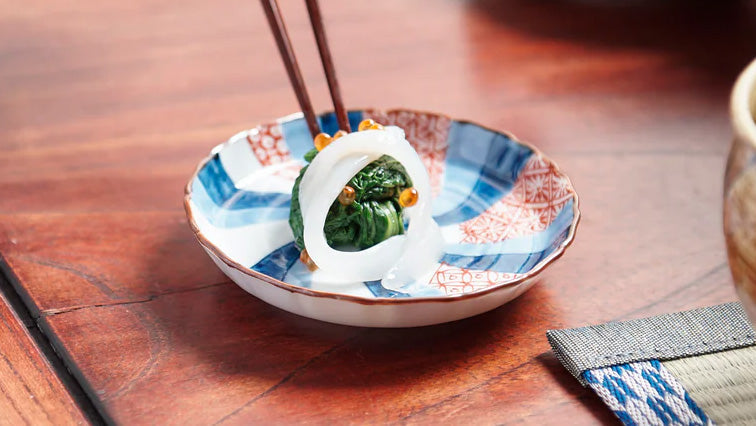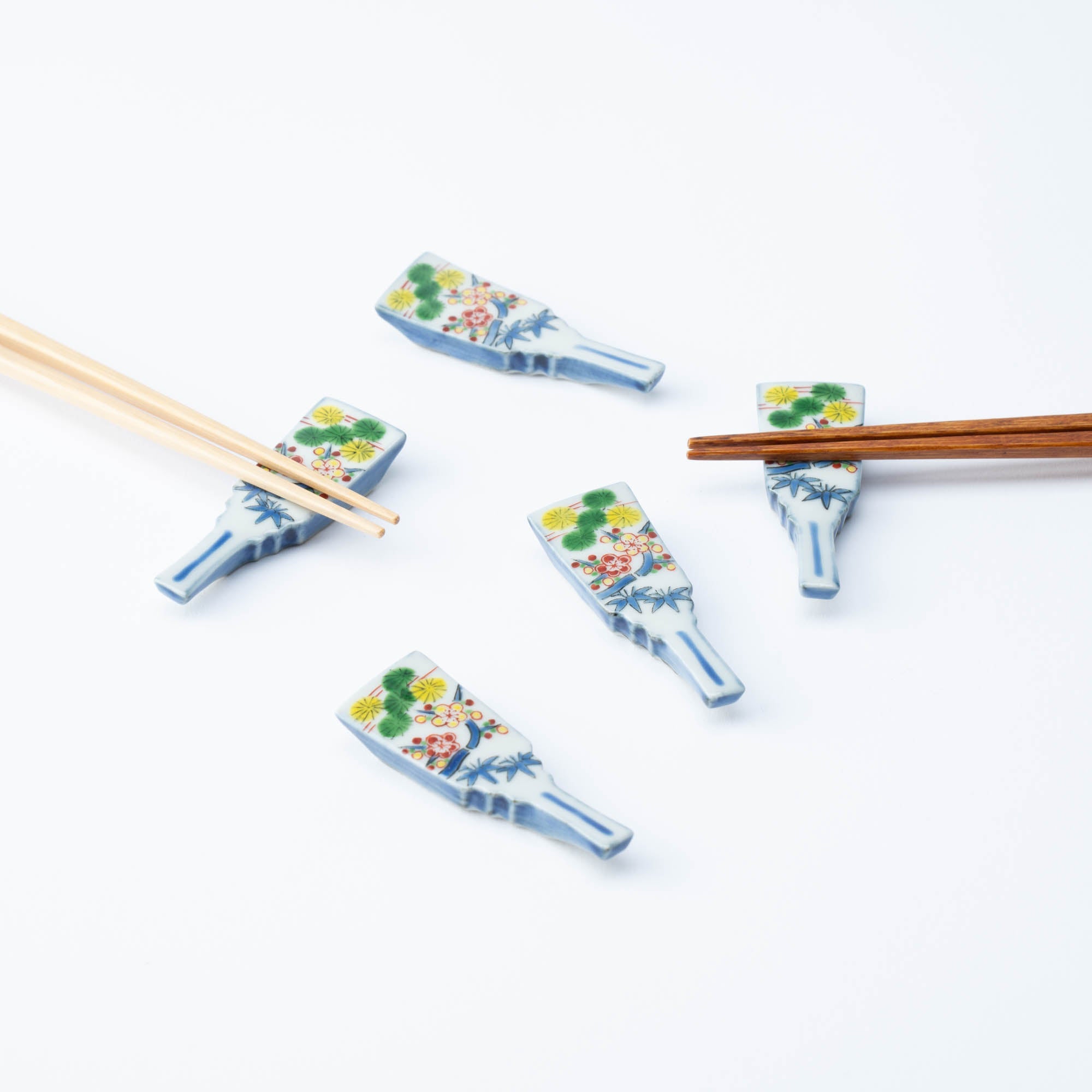
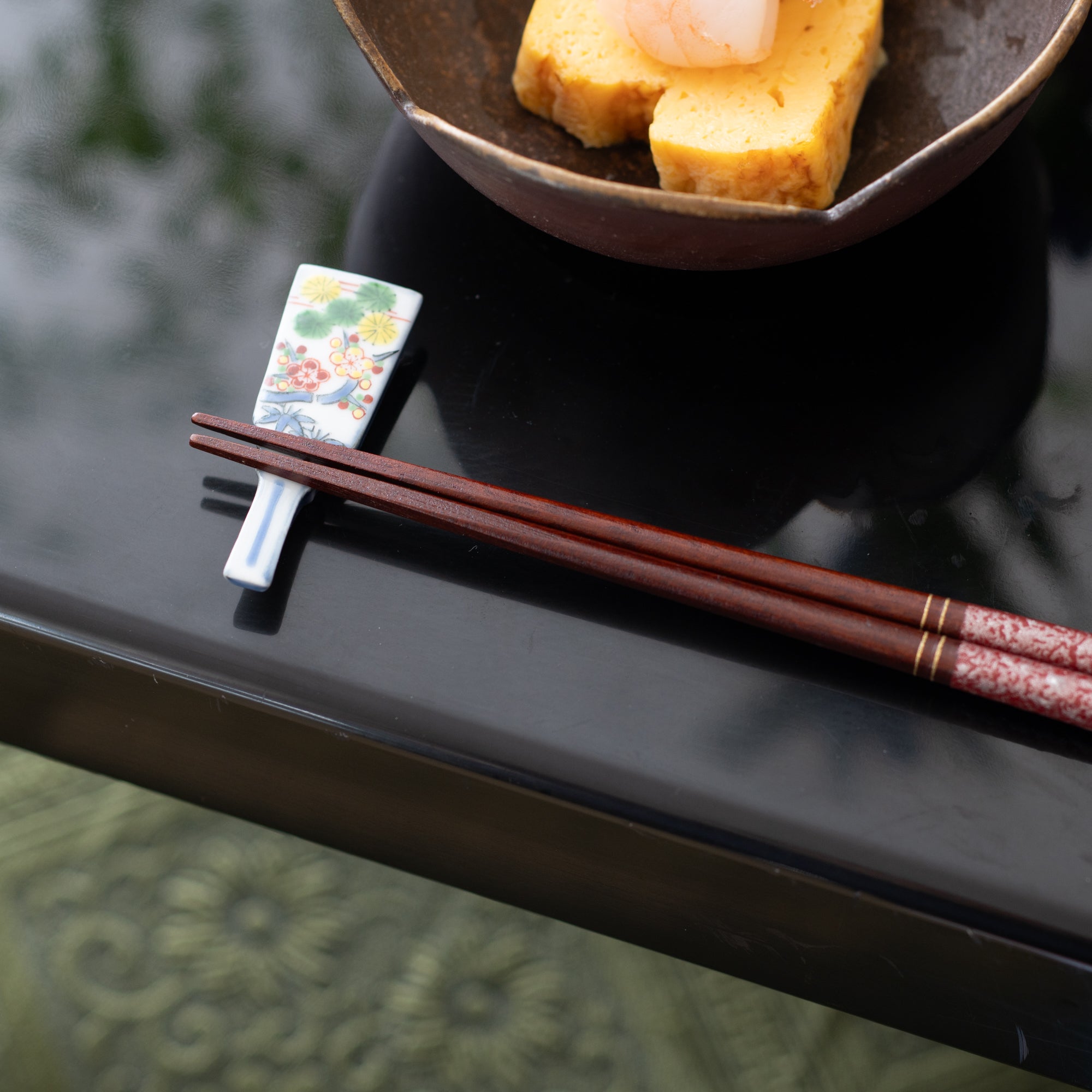
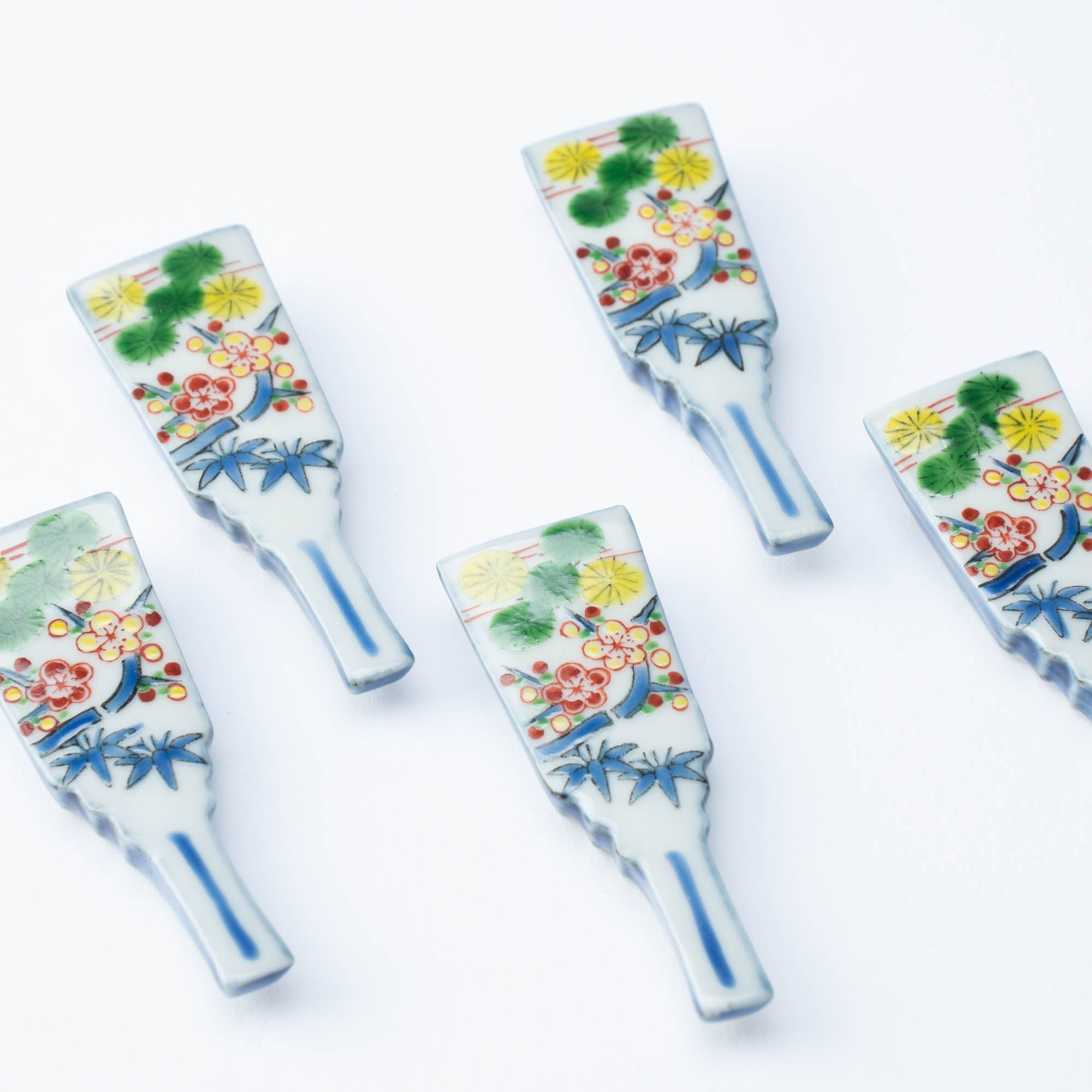
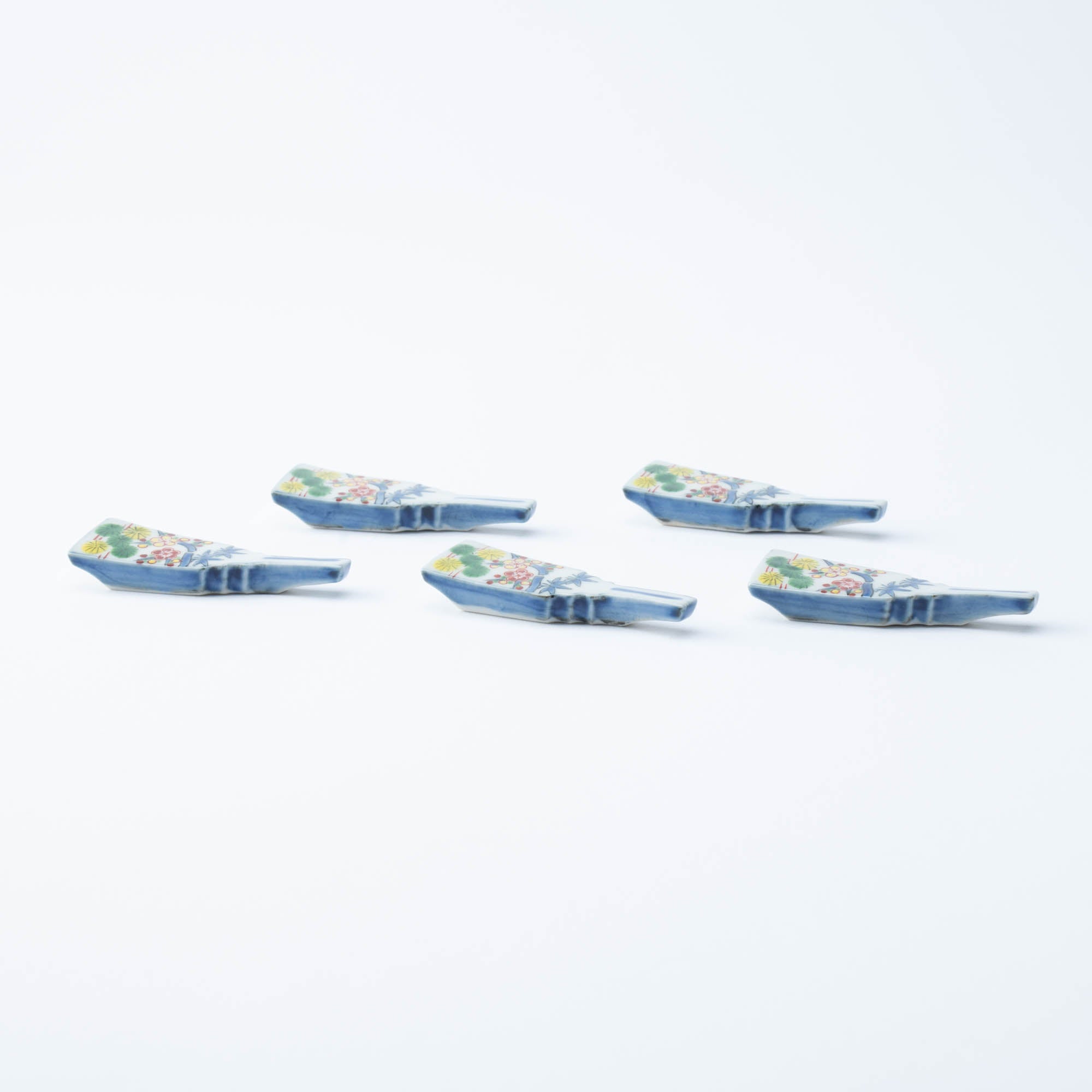
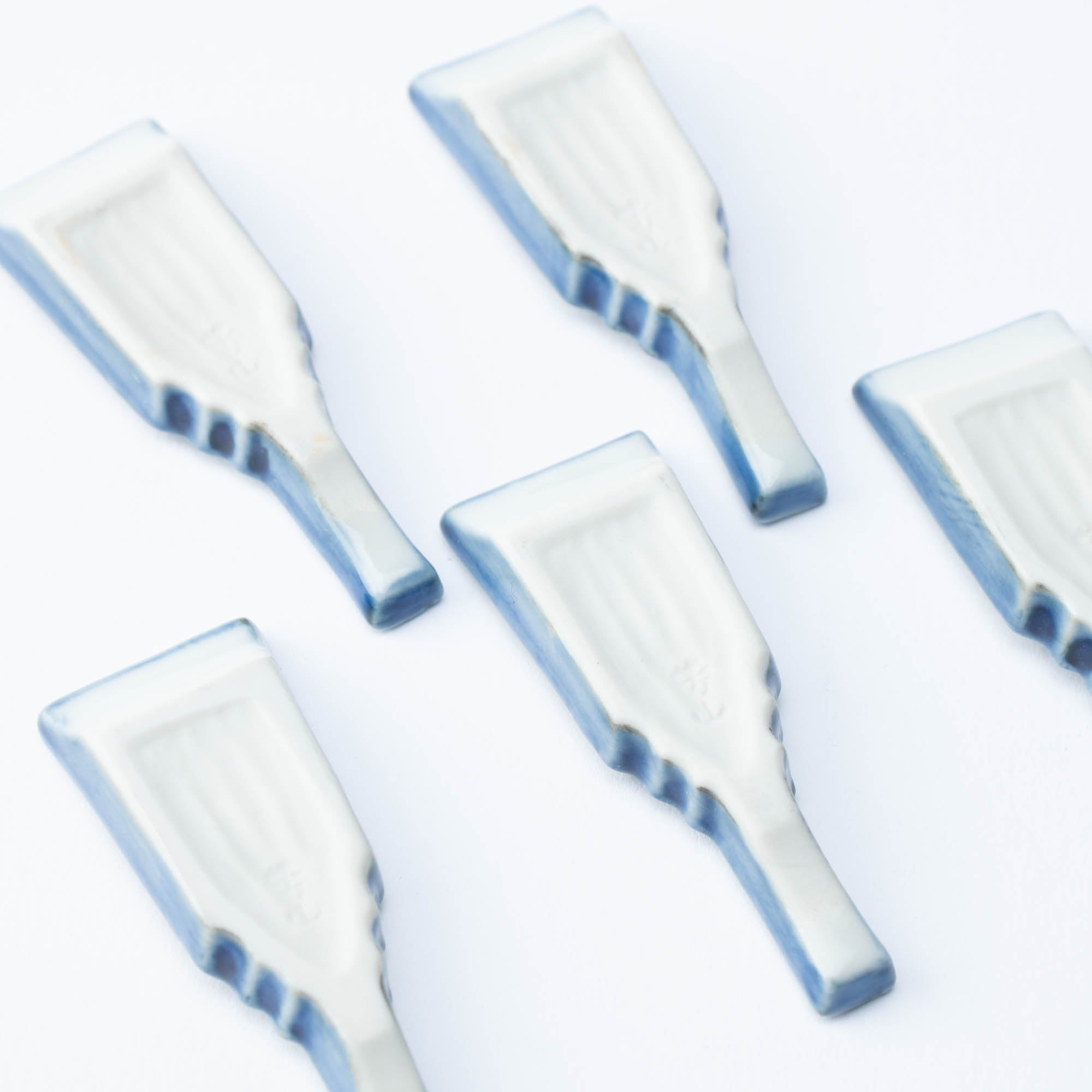
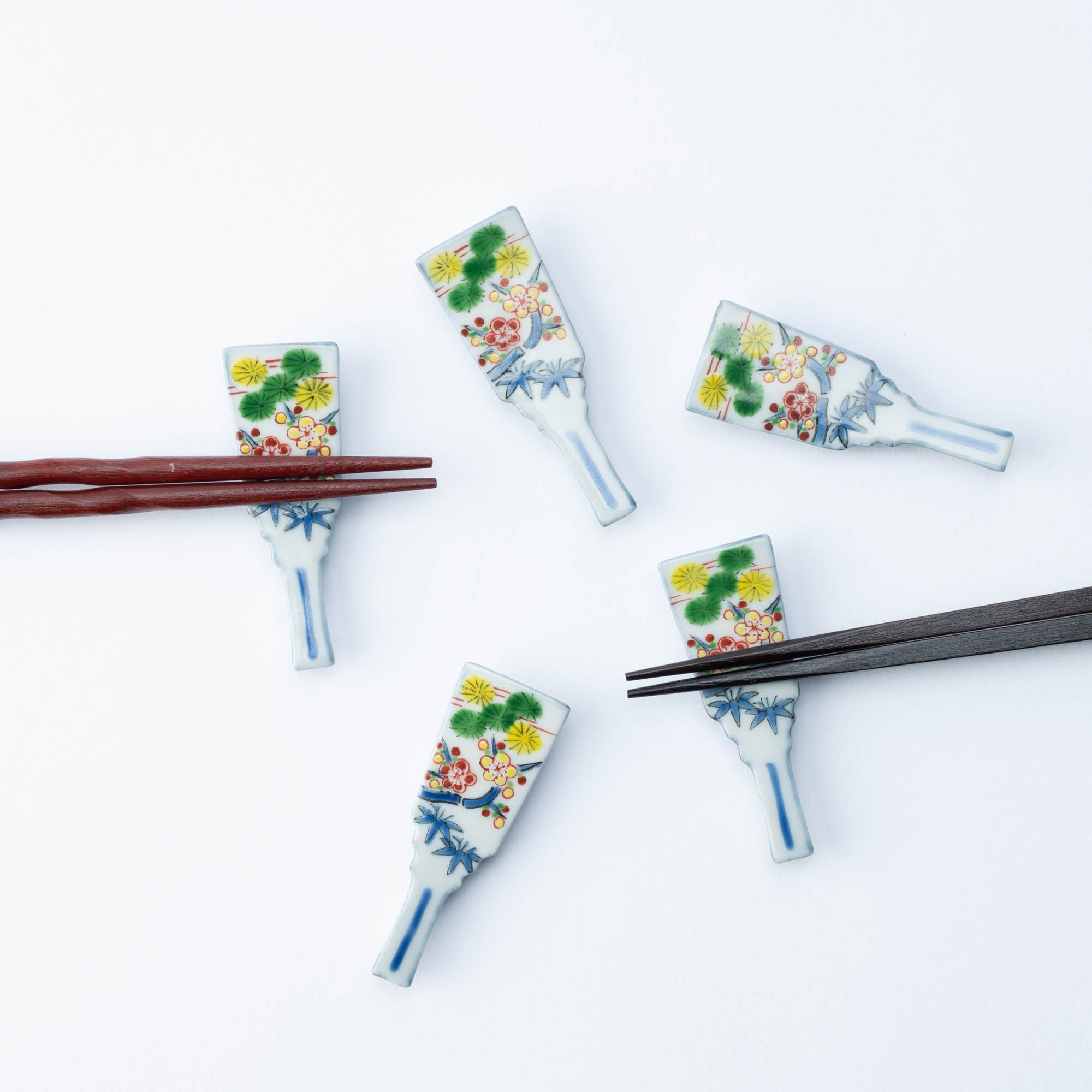
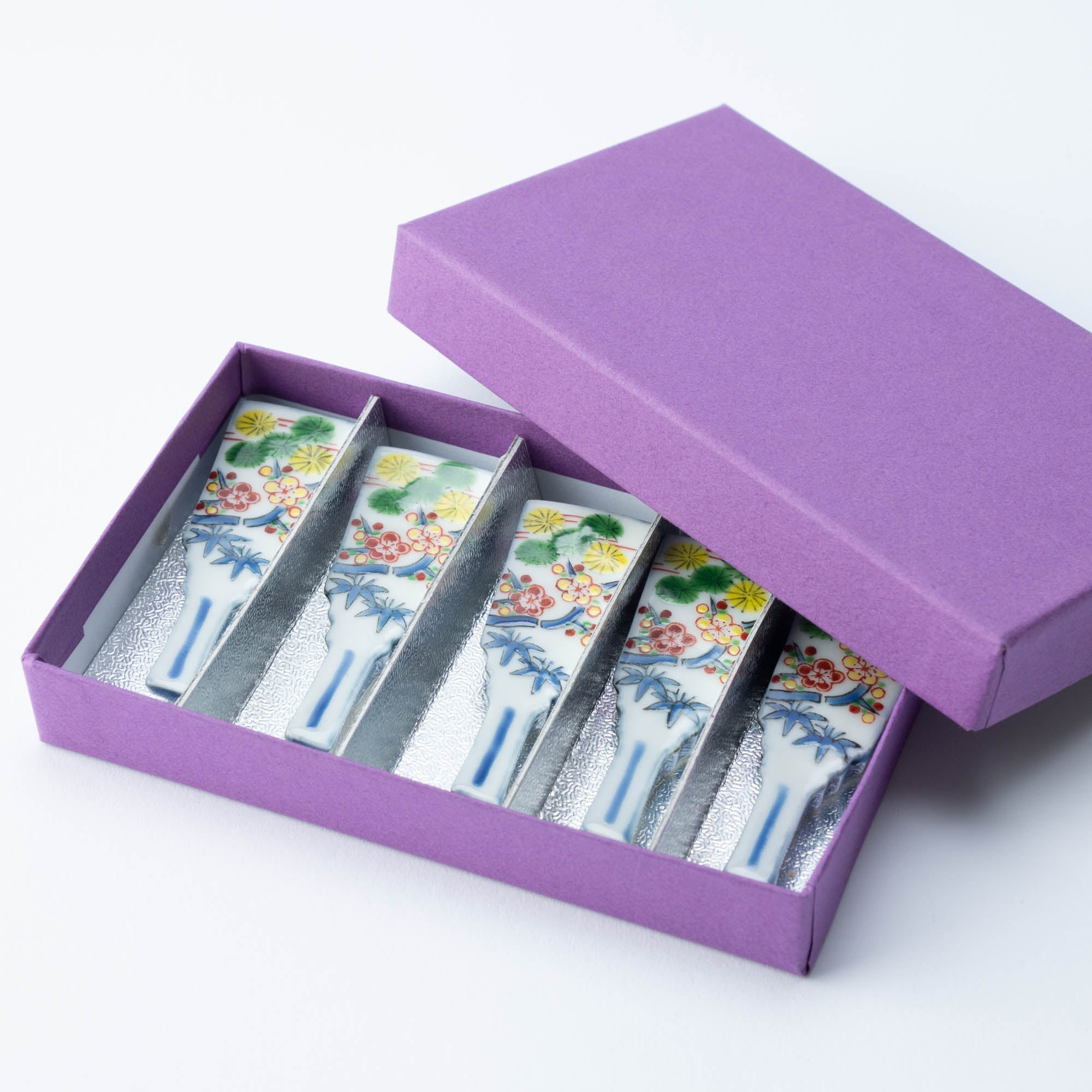
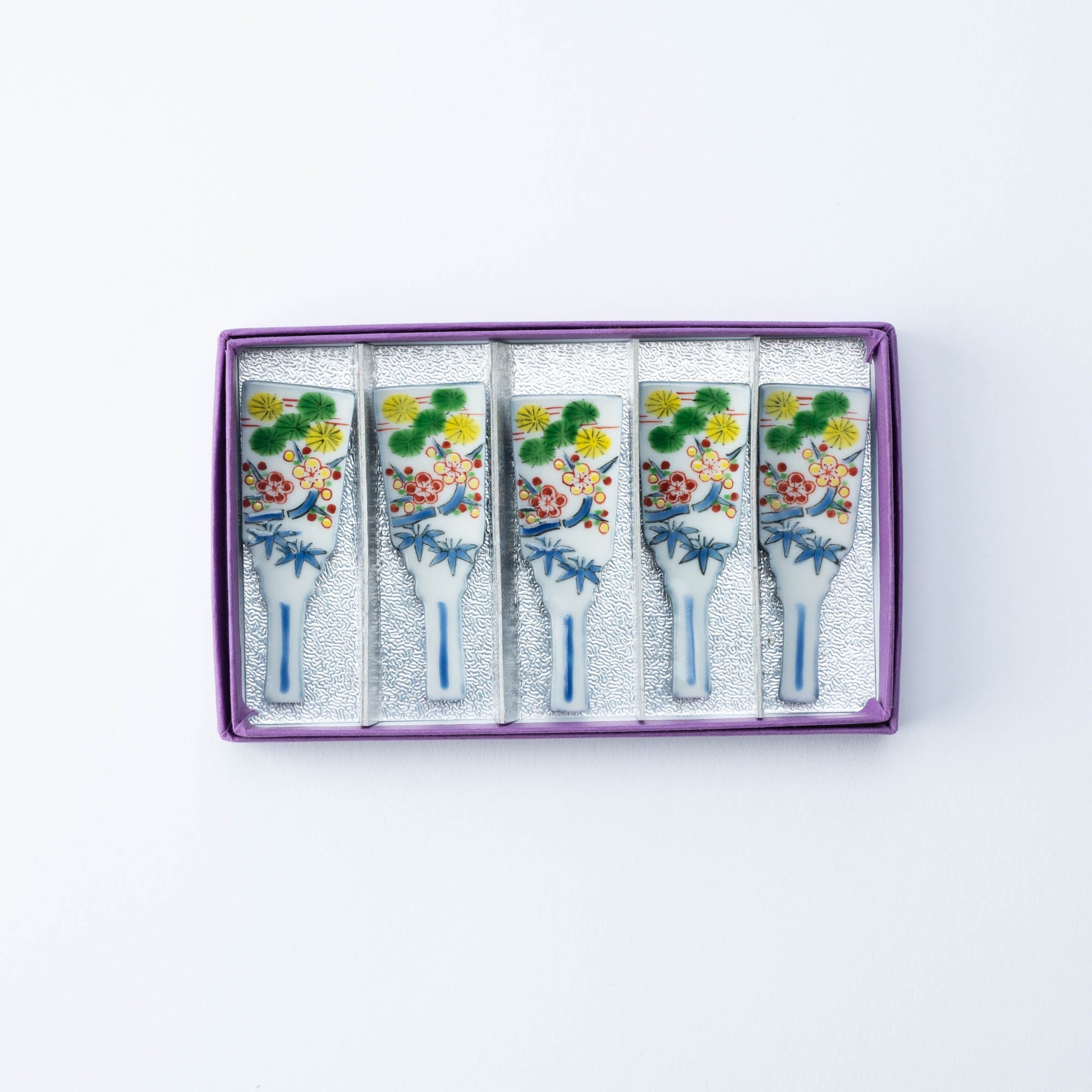
Essstäbchenablage Hagoita aus Kiefer, Bambus und Pflaume Satz
Estimated Shipping Widget will be displayed here!
Dies ist ein Set von Essstäbchenhaltern in Form eines hagoita, ein traditionelles japanisches Holzpaddel, verziert mit Kiefern-, Bambus- und Pflaumenmotiven. Das Gemälde der berühmten Kombination aus Kiefer, Bambus und Pflaume gilt in Japan als glückverheißendes Motiv, das Glück bringt und Langlebigkeit.
Die Seiten sind blau, während die Vorderseite mit Kiefernholz in Gelbgrün, Pflaumenblüten in Tiefrot und Bambus in Dunkelblau gestaltet ist. Diese lebendige Optik eignet sich perfekt für den Silvester-Esstisch.
Der Ursprung der Hagoita liegt im Spiel der Hanetsuki, traditionell mit diesen Paddeln gespielt. Ursprünglich glaubte man, dass es die Bedeutung hat, böse Geister abzuwehren, Hane bedeutet auf Japanisch „Feder“ und „abstoßen“.
EINZELHEITEN
| Quantity | 5 pcs |
| Size | L 6.5 cm (2.5 in) x W 2 cm (0.8 in) x H 1 cm (0.4 in) |
| Material | Porcelain |
| Package Type | Paper box |
| Microwave | No |
| Dishwasher | No |
Hersteller / Marke
Der Hozan-Ofen in Kyoto konzentriert sich hauptsächlich auf Unterglasur-Emaillierungstechniken, insbesondere gosu, und ist spezialisiert auf die Herstellung von netzbemaltem Geschirr und zart bemalten Essstäbchenablagen, die mit saisonalen Motiven verziert sind.
Die Geschichte von Hozan Kiln reicht bis ins Jahr 1951 zurück, als das Unternehmen als Kato Yukichi Seisakusho (Kato Yukichi Fabrik) gegründet wurde. Später wurde der Name in Hozan Kiln geändert. Der derzeitige Eigentümer, Kato Yoshitsugu, vertritt die dritte Generation.
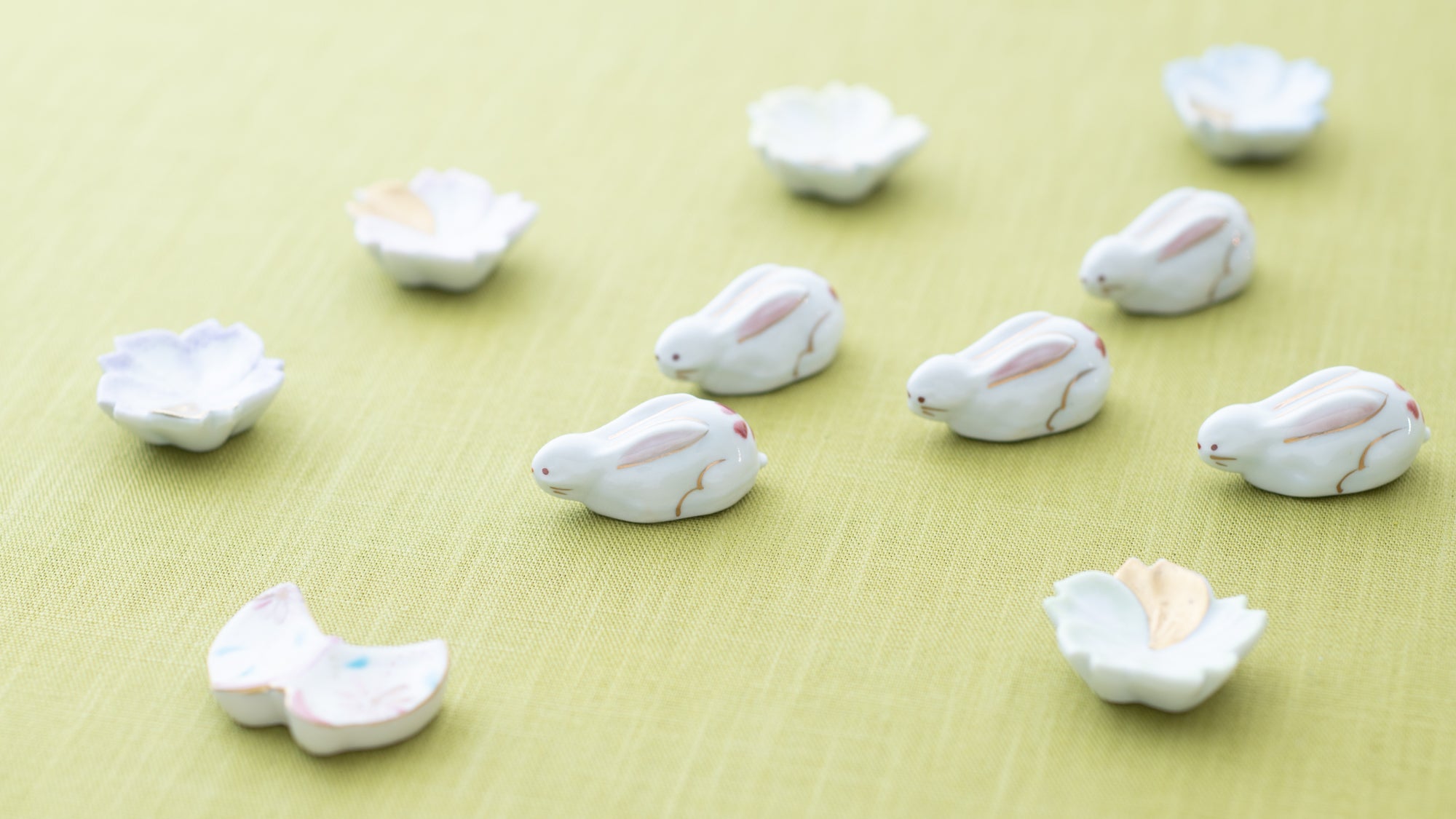
Kunsthandwerk
Kyo- und Kiyomizu-Ware, zusammen als Kyo-yaki und Kiyomizu-yaki bekannt, sind berühmte Keramikstile aus Kyoto. Bekannt für ihr lebendiges Design, ihre fein geformten Formen und die Liebe zum handwerklichen Detail, spiegeln diese Waren Kyotos unverwechselbaren Sinn für Schönheit und künstlerische Raffinesse wider.
Kyo- und Kiyomizu-Ware zeichnen sich durch eine lange gepflegte Vielfalt aus und greifen auf Techniken und Stile der Töpfertraditionen Japans zurück. So entwickelte sich eine ausdrucksstarke und typisch Kyoto-Kunstform. 1977 als traditionelles japanisches Kunsthandwerk anerkannt, werden sie bis heute wegen ihrer kulturellen Tiefe und Alltagstauglichkeit geschätzt.

Optionen auswählen








Estimated Shipping Widget will be displayed here!
Essstäbchenablagen
Essstäbchenhalter verleihen Ihrem Tisch einen Hauch japanischen Stils. Eine Mischung aus Alltagsgegenständen und besonderen Anlässen macht Ihren Tisch für jeden Anlass bereit. Wir haben handgefertigte Essstäbchenhalter aus ganz Japan ausgewählt, um Ihr kulinarisches Erlebnis noch angenehmer zu gestalten. Von verspielten Porzellanformen bis hin zu eleganten Metalldesigns verleihen diese kleinen Akzente jedem Ambiente einen besonderen Charme.
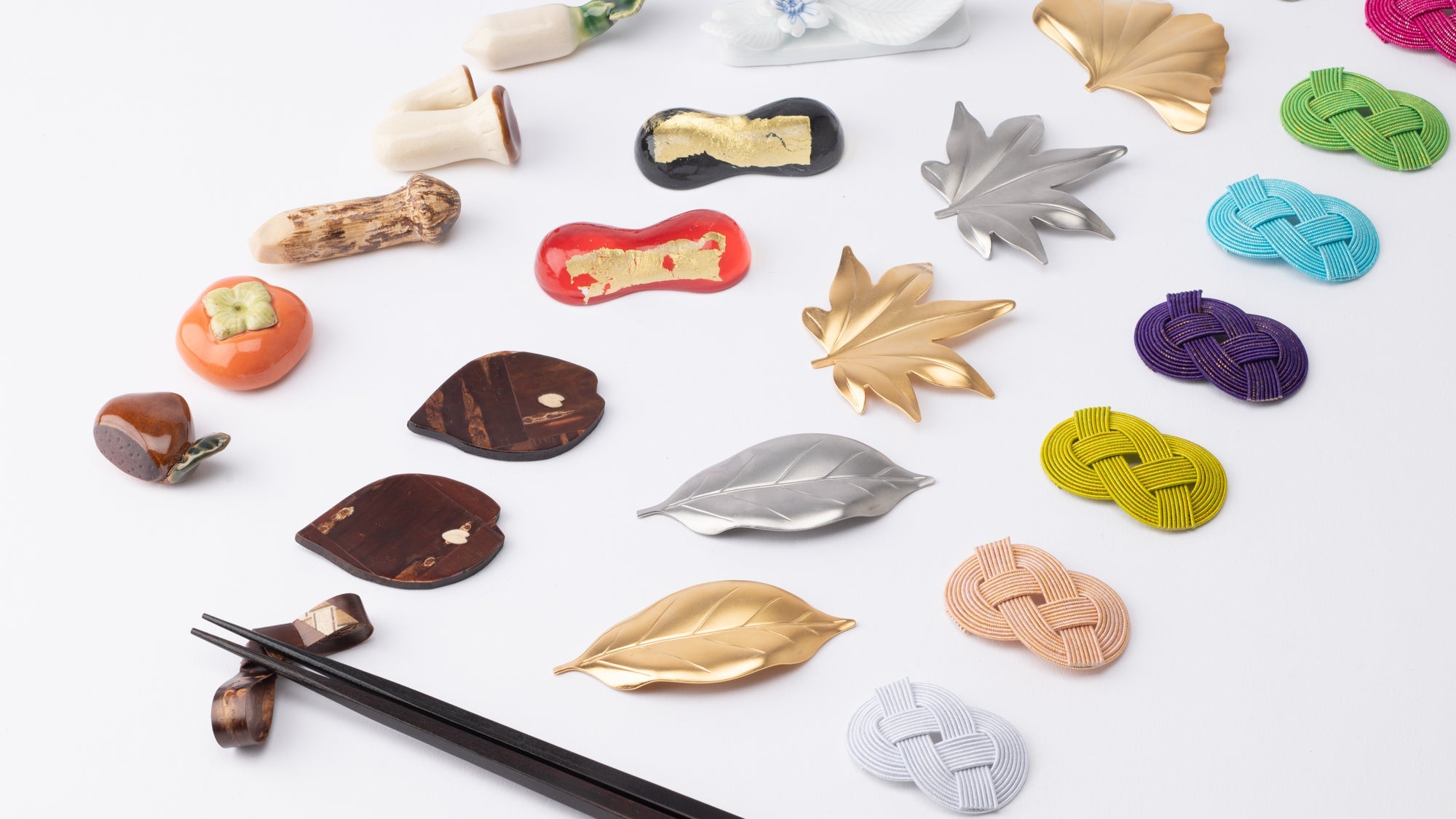
Porzellan
